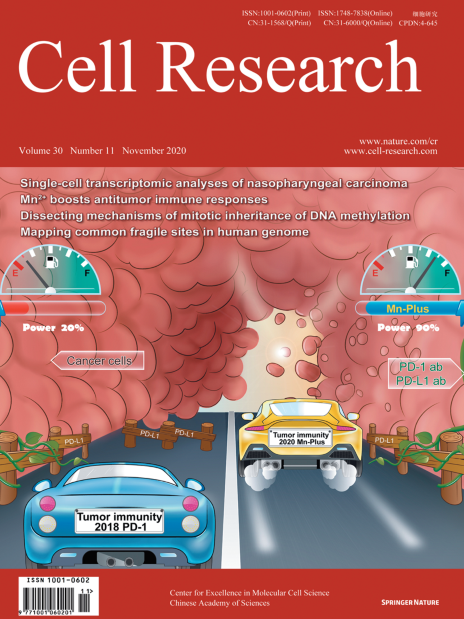
Advanced Search
Submit Manuscript
Advanced Search
Submit Manuscript
Volume 30, No 11, Nov 2020
ISSN: 1001-0602
EISSN: 1748-7838 2018
impact factor 17.848*
(Clarivate Analytics, 2019)
Volume 30 Issue 11, November 2020: 997-1008 |
High-resolution mapping of mitotic DNA synthesis regions and common fragile sites in the human genome through direct sequencing
Morgane Macheret1 , Rahul Bhowmick2 , Katarzyna Sobkowiak1 , Laura Padayachy2 , Jonathan Mailler1 , Ian D. Hickson2,* , Thanos D. Halazonetis1,*
1Department of Molecular Biology, University of Geneva, 1205 Geneva, SwitzerlandDNA replication stress, a feature of human cancers, often leads to instability at specific genomic loci, such as the common fragile sites (CFSs). Cells experiencing DNA replication stress may also exhibit mitotic DNA synthesis (MiDAS). To understand the physiological function of MiDAS and its relationship to CFSs, we mapped, at high resolution, the genomic sites of MiDAS in cells treated with the DNA polymerase inhibitor aphidicolin. Sites of MiDAS were evident as well-defined peaks that were largely conserved between cell lines and encompassed all known CFSs. The MiDAS peaks mapped within large, transcribed, origin-poor genomic regions. In cells that had been treated with aphidicolin, these regions remained unreplicated even in late S phase; MiDAS then served to complete their replication after the cells entered mitosis. Interestingly, leading and lagging strand synthesis were uncoupled in MiDAS, consistent with MiDAS being a form of break-induced replication, a repair mechanism for collapsed DNA replication forks. Our results provide a better understanding of the mechanisms leading to genomic instability at CFSs and in cancer cells.
https://doi.org/10.1038/s41422-020-0358-x